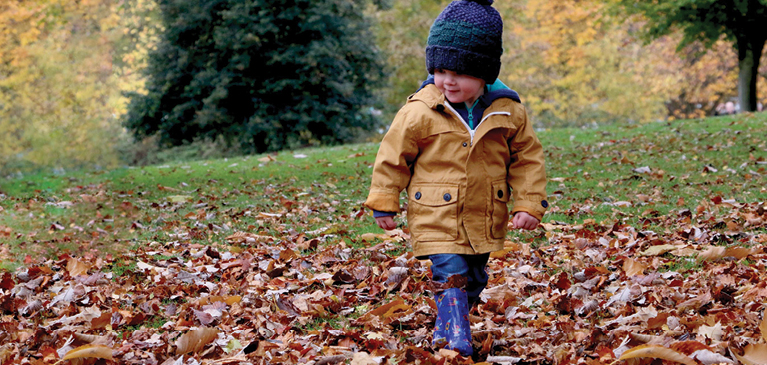
Don’t let the cold stop your outdoor activities! When you step outdoors, the ancient art of layering becomes your smart-technology thermostat. This tried-and-true strategy lets you regulate comfort by slipping layers on and off as your activity level or the weather changes.
How to layer: To understand layering your clothing for outdoor activities, you need to know the function of each layer:
- Base layer: wicks sweat off your skin
- Middle layer: retains body heat to protect you from the cold
- Outer layer: shields you from wind and rain
Even if you don’t wear all three layers at the outset, it’s a good idea to take all layers on every outing. You can peel off layers if things heat up, but you can’t put on layers that you didn’t bring along.
Layering Examples
The examples below provide an idea of layering solutions for a hike in various weather scenarios.
Cold Weather Layers
Midweight polyester long underwear top and bottom; a jacket with synthetic insulation; midweight fleece pants; waterproof/breathable rain jacket and pants.
Rainy and Cold Weather Layers
Lightweight polyester long underwear top and bottom; lightweight fleece jacket; synthetic hiking pants; lightweight waterproof/breathable rain jacket and pants (with plenty of vents).
Hot Weather layers
Polyester briefs and a short-sleeve synthetic Tee; convertible nylon hiking pants; lightweight wind jacket.
There are dozens of alternatives and options for each of these layers. The trick is to go with options that make the most sense for where you’re headed, what you’re doing and what you’re able to spend.
It’s also key that you take the time to adjust layers as conditions change. If the rain and wind let up, remove your shell. If hiking alone isn’t warming you up, add a middle layer. And many people add a middle layer (on top) and/or outer layer at every rest stop, just to avoid getting chilled.
Base Layer: Moisture Management
As the next-to-skin layer, a base layer’s job is moving perspiration away from your skin, aka “wicking.” In cool or cold conditions, wicking long-underwear-style base layers are needed to keep your skin dry. That’s essential because it helps to keep you from becoming chilled or worse—hypothermic.
There is a wide range of fabric options, including synthetics like polyester and nylon, or natural fibers like merino wool and silk. Though there are subtle differences in wicking and drying for each material, and in odor retention and durability, many simply go with their personal fabric preference.
Middle Layer: Insulation
The insulating layer helps you retain the heat that’s radiated by your body. The more efficiently this layer traps that heat, the warmer you’ll be.
Just as with base layers, there is a broad range of options, both synthetic and natural. In general, thicker (or puffier) equals warmer, though the efficiency of the insulating material is also important.
Outer Layer: Rain and Wind Protection
The outer layer (or shell layer) protects you from wind, rain and snow. Shells range from pricey mountaineering jackets to simple wind-resistant jackets. Most allow at least some perspiration to escape; virtually all are treated with a durable water repellent finish to make water bead up and roll off the fabric.
Your outer shell is an important piece in stormy weather, because if wind and water are allowed to penetrate to inner layers, you can get seriously chilled.
Layer up and enjoy outdoor fall and winter activities!
Source: REI Co-op
Link to full outdoor activity article: https://issuu.com/greenstonefcs/docs/partners_fall_18web/34


